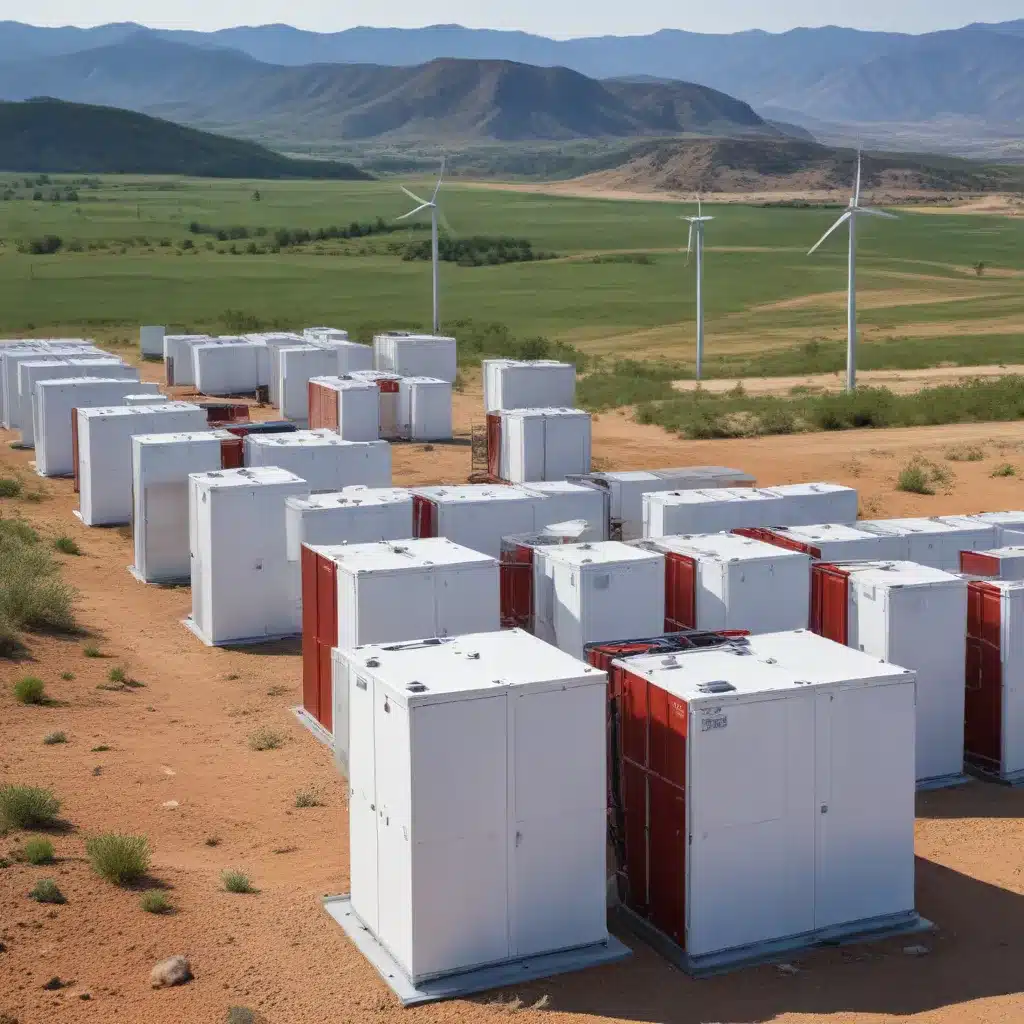
Advances in Hybrid Energy Storage Systems for Harmonizing Renewable Integration
The rising global demand for clean energy has driven a rapid renewable energy (RE) expansion across Europe, transforming the continent’s power landscape. From record-breaking wind farm installations in the North Sea to the rapid proliferation of rooftop solar photovoltaic (PV) systems, the transition to a sustainable energy future is well underway. Yet, the intermittent nature of these RE sources poses a unique challenge for grid operators – how to maintain reliable, high-quality electricity supply amidst the variability of wind and solar.
Hybrid energy storage systems (HESS) have emerged as a pivotal solution, integrating diverse energy storage technologies to create a more resilient, flexible, and efficient grid. By combining complementary storage mediums like lithium-ion batteries, pumped-hydro storage, and hydrogen fuel cells, HESS can address the shortcomings of individual storage systems and optimize renewable integration. This article explores the latest advancements in HESS, examining how these innovative systems are revolutionizing Europe’s clean energy transition.
Technological Advancements in HESS
The core premise of HESS is the synergistic pairing of energy storage technologies to leverage their respective strengths and overcome individual limitations. For example, lithium-ion batteries excel at rapid charge/discharge and high power density, making them ideal for smoothing short-term fluctuations in renewable generation. In contrast, pumped-hydro storage offers unparalleled energy capacity and long-duration discharge, but with slower response times. By integrating these complementary systems, HESS can provide comprehensive grid support, from fast-acting frequency regulation to long-term energy arbitrage.
Recent years have witnessed remarkable progress in HESS architectures and control strategies. Emerging technologies like solid-state batteries, flow batteries, and supercapacitors are being seamlessly integrated into HESS, expanding the performance envelope. Sophisticated energy management systems (EMS) now coordinate the dispatch of diverse storage assets, optimizing their operation based on real-time grid conditions, renewable forecasts, and economic factors.
Overcoming Grid Integration Challenges
The intermittent nature of wind and solar generation can introduce power quality issues, voltage fluctuations, and grid instability. HESS play a crucial role in mitigating these challenges, providing the necessary flexibility and responsiveness to maintain grid reliability.
Power quality control is a prime example, where HESS can rapidly inject or absorb real and reactive power to counteract voltage sags, harmonics, and frequency deviations. The fast-acting capabilities of battery systems, combined with the energy-rich reserves of other storage technologies, enable HESS to provide seamless grid regulation and enhance power quality.
Equally important is the HESS’s ability to manage the variability and unpredictability of renewable sources. By coupling RE generation with diverse storage mediums, HESS can smooth output profiles, shape load curves, and provide dispatchable power to the grid. This helps grid operators maintain a stable, balanced system, reducing the need for fossil-fueled peaking plants and enabling higher penetration of clean energy.
Optimizing HESS Performance
Maximizing the benefits of HESS requires careful system design, sizing, and control optimization. Researchers and grid operators are deploying advanced analytical tools to determine the optimal storage mix, capacities, and placement within the network. Multi-objective optimization algorithms consider factors like capital costs, operational expenses, environmental impact, and grid service requirements to identify the most suitable HESS configuration.
Moreover, innovative control strategies are being developed to coordinate the operation of HESS components. Hierarchical control architectures leverage high-level supervisory systems to orchestrate storage asset dispatch, while local controllers ensure smooth, real-time operation. Techniques like model predictive control and reinforcement learning are enabling HESS to adapt to changing conditions, maximizing renewable integration and economic benefits.
Sustainability Considerations
As Europe accelerates its clean energy transition, the environmental and economic sustainability of HESS solutions are paramount. The carbon footprint of storage manufacturing and deployment must be carefully evaluated, with a focus on life cycle assessment and circular economy principles.
Equally important is the cost-competitiveness of HESS, which can be enhanced through technological advancements, economies of scale, and innovative business models. Public-private partnerships, renewable energy auctions, and power purchase agreements are all helping to drive down HESS deployment costs and unlock new revenue streams for project developers.
Regulatory Frameworks and Policy Incentives
Supportive policy frameworks and regulatory environments are essential for the widespread adoption of HESS. Across Europe, governments are implementing targeted energy storage mandates, grid service remuneration schemes, and investment tax credits to catalyze the integration of these advanced storage systems.
The European Union’s Renewable Energy Directive and Clean Energy Package provide a robust policy foundation, setting ambitious renewable energy and emissions reduction targets. These initiatives, coupled with national-level green hydrogen strategies and battery manufacturing support, are creating a conducive environment for HESS to thrive.
Future Trends and Emerging Opportunities
As the clean energy transition accelerates, the role of HESS will continue to evolve. Emerging technologies like vanadium redox flow batteries, cryogenic energy storage, and gravity-based mechanical storage are poised to expand the performance envelope of HESS. Furthermore, the integration of HESS with smart grid infrastructure and distributed energy resources will unlock new synergies, enhancing grid resilience and unlocking novel revenue streams.
The European Future Energy Forum (https://www.europeanfutureenergyforum.com) has been at the forefront of these developments, convening industry leaders, policymakers, and researchers to shape the future of sustainable energy in Europe. By fostering collaboration and knowledge-sharing, the Forum is driving the innovations that will power Europe’s clean energy future.
As the renewable energy revolution gains momentum, the harmonious integration of HESS will be a pivotal enabler. By harnessing the complementary strengths of diverse storage technologies, European nations can overcome the challenges of intermittency, maintain grid stability, and accelerate the transition to a net-zero emissions future.






